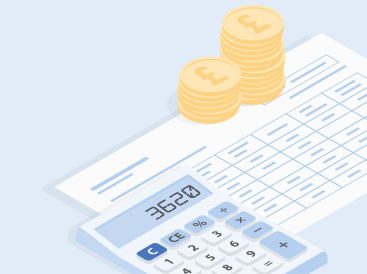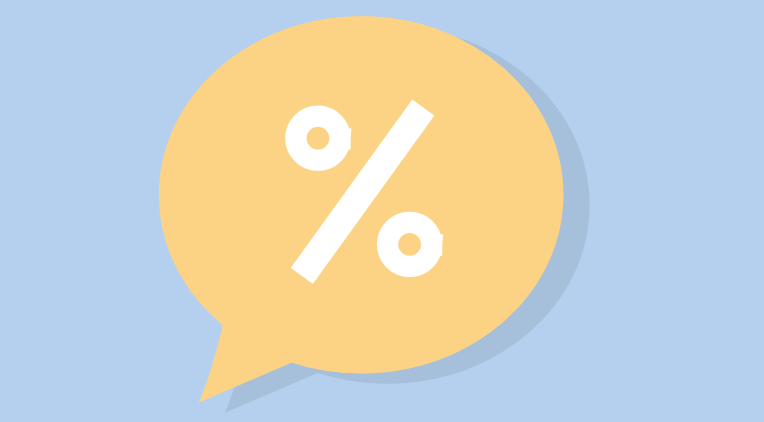27 MAR 2023 15 MIN READ
What is PAYE?
Most employers will deal with employee taxes by using the PAYE system. PAYE is used by HMRC to collect income tax and national insurance (NI) payments from employees – and it is an employer’s responsibility to deduct these payments from employee earning and ensure they get to HMRC.
Failure to pay these taxes can cause some big problems for your business, so using PAYE can help make sure you’re paying the right amount at the right time. By paying as you earn, the payments towards income tax and NI are spread evenly over the year, that way no one is surprised by major payments at the end of the year.
PAYE tax deadlines
If your HMRC taxes are done as monthly payments, you’ll need to make sure everything is paid up by the 22nd day of the following tax month.
Small businesses that pays employees less than £1,500 a month, can arrange to pay HMRC on a quarterly basis instead. If you chose quarterly payments, you must make them by the 22nd of the following month after the end of the quarter. Contact HMRC’s payment inquiry helpline for more details on how to make quarterly payments.
Access your HMRC online account from the 12th of each month to see your FPS and how much tax and National Insurance your business owes.
Who operates PAYE tax?
The PAYE system is managed by HMRC but you can choose a variety of methods for operating your business’ payroll system. Either you can do it yourself, you can hire an accountant to manage payroll, or you can use payroll software. No matter how payroll is managed, you still need to keep records of everything that is sent to HMRC.
How do I use PAYE?
Using PAYE will hopefully make reporting to HMRC simpler, so here’s how to get started with it:
- Register as an employer with HMRC
- Get your employer PAYE Number and login details
- Choose a payroll system that can report to PAYE
- Calculate the necessary deductions such as NI and income tax
- Produce a payslip and give it to your employee
- Keep accurate records of employee pay
- Record pay, make deductions, and report all of these details to HMRC
- Pay HMRC any employer taxes and contributions
Even if you only have one employee, this can be a lot of work so the goal of PAYE is to streamline these processes and let the PAYE system do the majority of this work.
Employers’ responsibility for PAYE
If your employees earn more than £120 a week or £520 a month, then you are required as an employer to use the PAYE system.
You’ll need to give your employees a payslip or statement when you pay them and this can be electronic or in hardcopy. This payslip must contain certain information such as the gross pay before deductions, an itemised list of all deductions and the take home pay amount after deductions are made. If you don’t provide a payslip with all the relevant information, your employees could complain to an employment tribunal.
You’ll also need to run annual reports at the end of the tax year, informing HMRC of annual employee expenses and benefits. These include the P60 and P11D forms and your payroll system can usually help generate these as well.
In addition to all of these tax forms, you’ll need to tell HMRC when a new employee joins or if a current employee’s status changes within the company. For instance, if they become a director or reach the State Pension age.
There’s a lot you need to keep HMRC updated on as an employer. While this list is not exhaustive, here’s a few examples of when you need to inform HMRC about an employee.
Let HMRC know if an employee:
Joins
Leaves
Takes a leave of absence
Starts receiving a workplace pension/joins or leaves a contracted out pension
Changes their home address
Becomes a director of your business
Reaches State Pension age
Goes on jury service
Changes gender
If you haven’t paid any employees for at least one tax month, then you must inform HMRC by filling in an Employee Payment Summary (EPS) form.
Keeping records
Even if your business is not registered for the PAYE system, you should keep accurate records of pay for anyone that works at your business for 3 years from the end of the tax year they relate to.
Your records should include details on what you pay your employees, the deductions you make, any reports and payments sent to HMRC, employee leave and sickness absences, tax code notices, and any taxable expenses or benefits.
HMRC can carry out an inspection to ensure that you’re paying the right amount of tax and if you don’t have the correct records, they can estimate your tax and fine you.
Payslips can have sensitive information, so ensure that the rules on data protection are followed when keeping records of your payroll.
If your payroll records are lost or stolen, you should tell HMRC as soon as possible and inform employees if any of their sensitive information may have been accessed. HMRC may be able to help you understand how much you have paid your employees if you do not have records and cannot replace them.
If your records are estimated or provisional while you work to recreate lost or stolen records, then you must report that to HMRC.
Do self-employed people have to use PAYE?
If you’ve hired a freelancer or self-employed worker, then they will usually be responsible for their own national insurance contributions and will not need to be enrolled in a company pension scheme.
If you are self-employed, you’ll declare and pay tax on your earnings when you submit a self-assessment tax return at the end of each tax year.
If you have a full-time job and also make money from a side hustle, then you will still be processed via the PAYE system for your full time job. However, if your side gig earns you more than £1,000 in a year, you’ll have to file a self-assessment tax return for those earnings. If you earn less than £1,000 from your self-employed work, then it’s tax free and you won’t need to report it.
What is PAYE tax?
PAYE isn’t a tax, merely a system that helps you calculate taxes and other deductions for your employees and spread their taxes out evenly over the course of a year. It’s important that both you and employees understand that PAYE isn’t a perfect measurement of what they owe in tax and sometimes they’ll either need to pay more or get some money refunded at the end of the year.
HMRC uses tax codes to help employers understand the right rates to use. These codes are normally identified by using a combination of letters and numbers such as 1257L or K396. You can see the key rates of income tax and personal allowances on GOV.UK.
Employees can view details about their tax code and how it has been calculated on the HMRC website through your Personal Tax Account.
How does the PAYE system work?
PAYE is used to calculate deductions on all payments that an employee receives as a result of the work that they do for you. This includes but is not limited to:
In addition to deductions for income taxes and national insurance, PAYE will also deduct student loan payments, employee pension contributions, and attachments of earnings orders, to list a few.
Some benefits may need to be reported separately and may have specific tax requirements such as company cars or medical insurance while trivial benefits do not need to be reported. Usually sick pay, bonuses and benefits are usable like ordinary income, so you’ll deduct PAYE before paying these.
However, expenses, such as work-related travel, are generally not classed as income because the employee pays these and then gets reimbursed. Therefore, they are not subject to the taxes deducted by PAYE. Consult a financial professional if you aren’t sure what needs to be reported or when to take tax deductions.
How to report pay and deductions to HMRC
In order to let HMRC know what you’ve paid employees and what deductions have been made, you’ll need to complete a Full Payment Submissions form (FPS). You’ll need your employees’ tax codes and category letters to fill out the FPS accurately and may need to deduct student loan repayments or make pension contributions for employees enrolled in workplace pension schemes.
Where applicable, you can send HMRC an Employer Payment Summary (EPS) if you want to claim any reductions on what you owe HMRC. This might include reclaiming statutory maternity, paternity, adoption, parental bereavement or shared parental payments.
Once all of these reports have been submitted, you can sign into you online HMRC account to see what tax you owe as an employer.
What if there’s a mistake in my PAYE?
If you have made a mistake on an employee’s FPS or any other documentation, then make sure you correct it as soon as possible so that there’s no risk of penalties from HMRC.
If you think that HMRC has made a mistake, then first double check that you have entered all the information correctly. If all the data is correct but your bill is still not what you expected, contact HMRC’s employer helpline for assistance.
PAYE tax refunds
If it is found that you have overpaid in tax, it can be used as credit against future payments, or you can apply for a PAYE tax refund at the end of the tax year. If there was a mistake that means an employee has overpaid in taxes, then the overpaid amount should be refunded through payroll to the respective employee.
How to make payments to HMRC
Once you know how much money you need to pay to HMRC, actually making the payment is pretty easy and there’s quite a few ways to do it. According to the UK Government website, here’s what you need to know about paying your PAYE bill and how long each method takes:
Make sure you pay HMRC by the deadline. The time you need to allow depends on how you pay. If the deadline falls on a weekend or bank holiday, make sure your payment reaches HMRC on the last working day before it.
- online or telephone banking by Faster Payments or CHAPS
- through your online bank account
- by debit or corporate credit card online
- online or telephone banking by Bacs
- at your bank or building society (cash or cheque)
- single payment Direct Debit, if you’ve already set one up
- by cheque through the post
- single payment Direct Debit, the first time you set one up
- automatic Direct Debit, the first time you set one up
What different kinds of PAYE tax forms are there?
These forms are associated with PAYE as they relate to tax. These are not issued as frequently as payslips are but they’re still important for employers to be familiar with. Let’s explore the other tax forms:
A P60 form is a record of an employee’s pay and deductions for the tax year. Employers must issue P60s for every employee between 5 April and 31 May at the latest.
The P11D is a UK tax form used to report on ‘benefits in kind’ which employees or directors receive from their employer. The return date for the form is usually around 6 July following the tax year in question.
Any employee that is leaving your company should be issued a P45 by you. Usually, you will issue a P45 with an employee’s last payslip.
If you have payroll software, it should be able to help you generate all of these forms as needed.
Are there exemptions to PAYE tax?
According to the UK Government website: You do not need to register for PAYE if none of your employees are paid £123 or more a week, get expenses and benefits, have another job or get a pension. However, you must keep payroll records.
If you are not exempt from using PAYE, you may be exempt from reporting payroll online. There aren’t many exemption for reporting payroll online, so be sure to check HMRC guidance to see if you are eligible.
What happens if I don’t use PAYE?
If you are not eligible for a PAYE exemption, then you must use it. Not doing so could result in warnings or penalties from HMRC.
How is PAYE calculated?
How much tax an employee needs to pay depends on their yearly salary. Most employees will be eligible for a tax-free personal allowance and their tax code will help determine what their allowance is.
The tax codes will appear on a payslip as a string of numbers and a letter with the most common code being 1250L. This indicates that the employee can earn a personal allowance of up to £12500 per year before being taxed.
The current tax bands for the 2022 to 2023 tax year are:
| Band | Taxable income | Tax rate |
| Personal Allowance | Up to £12,570 | 0% |
| Basic rate | £12,571 to £50,270 | 20% |
| Higher rate | £50,271 to £150,000 | 40% |
| Additional rate | over £150,000 | 45% |
If you have an employee that’s just started, you can find out their tax code by looking at the P45 form that was provided by their previous employer.
If any employee’s tax code has changed throughout the year, HMRC will let you know so that you can update your payroll records and ensure that they are paying the correct amount of tax.
PAYE tax calculation example
Step 1
Calculate your annual income from each job
Scarlett lives in England and has one full-time job and a side hustle that she uses to earn some extra money. Her full-time job has an annual salary of £25,000 and in this tax year she has earned an additional £5,000 from her side business.
Step 2
Find out your tax-free personal allowance
Scarlett’s tax-free personal allowance (£12,570 annually) is allocated against her first job through their payroll system. She knows this because she can see that they use the PAYE code of 1257L on her payslips. The full £12,570 personal allowance is used up by her full-time job, so she can’t claim this allowance again on her self-assessment tax return.
Step 3
Fill in the self-assessment tax return for any earnings not covered by PAYE
Therefore, when she fills out her self-assessment tax return at the end of the year to pay tax on earnings for her side business, she needs to use the BR tax code and pay the basic rate of 20% on these earnings.
| Income from first job | £25,000 |
| Income from side hustle | £5,000 |
| Total income | £30,000 |
| Less personal allowance | (£12,570) |
| Balance subject to 20% tax | £17,430 |
| Income tax due | £3,486 |
Step 4
Calculate any deductions needed for your self-assessment tax return
This is not including any deductions that must be made for national insurance contributions. Scarlett’s employer should take Class 1 National Insurance payments (NIC) out and details these on her payslip each month.
However, depending on earnings from her side hustle, she may also need to make Class 2 or Class 4 NIC payments. Read more about self-employed National Insurance rates here.
Step 5
Submit your completed self-assessment tax return to HMRC on time
There are penalties for late returns, so make sure you get them in on time! Penalties start from £100 and go up the longer paperwork is delayed. Scarlett has returned her paperwork before the deadline so she has no additional fees to pay.
PAYE calculator
If you’re struggling to deal with employee taxes, HMRC has a PAYE calculator which can help you check your payroll calculations. You’ll want to have your employee’s tax code, gross pay, tax totals and the period of pay to hand as entering these will get you the most accurate information.
PAYE tax tips
Make sure you’ve got the tax codes right
It’s easy to include the wrong tax codes or make a mistake but this could result in too much or too little income tax being deducted from employees’ pay.
Double check your calculations
While your payroll software should do most of the heavy lifting when it comes to calculations, businesses often incorrectly calculate or separate expenses, pension payments, and sick pay. So give these an extra look over before submitting your forms.
Plan ahead so that you can meet the deadlines
Submitting your FPS forms late may result in a penalty or a written warning if it’s your first time being late.
Use free resources where available
If you have ten employees or less, HMRC has a list of free payroll software that you can choose from.
Update your software regularly
Rates and thresholds can change, so updating regularly will make sure that all your employees are paying the right amount of tax.
Fix your mistakes quickly
For example, ensure that you entered the date you paid your employees on your FPS report and not the date you sent it. If you notice a mistake, correct it as soon as possible.
Keep good records
If your business does not maintain full payroll records, HMRC may charge you a penalty of up to £3,000.
Get supplies from HMRC where relevant
For example, if your payroll systems doesn’t produce P60s, you can order copies from HMRC. Or if you want to pay PAYE tax at your bank or by post, you can ask HMRC for a payment booklet.
Work hard, insure easy
Running a business is hard work. That’s why we’re doing all we can to make your insurance a bit easier. From helping you tailor your policy to your unique business needs, to taking the guesswork out of finding business insurance, find out what we’re doing to help small businesses.
All links are checked and valid at time of publishing, 27 March 2023.







